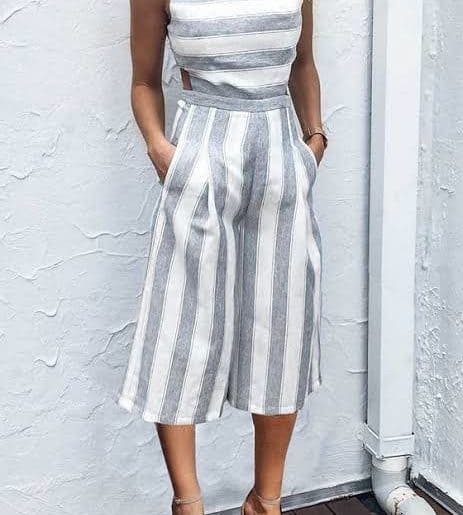While men have always had spacious pockets catering to their utility, women have had to endure a lack of pockets, false pockets, and pockets so small nothing would fit. DU Beat traces the journey of pockets through the 17th century and the gender divide they propagate every day.
“The history of pockets isn’t just sexist, it’s political.” Fashion thrives on sexism. Whether or not a garment gets utilitarian pockets depends upon the gender the garment is being stitched for and the norms surrounding that gender. While men have had baggy, spacious pockets since their advent in the 1600’s, women still continue to struggle with fashion norms that dictate a lack of pockets, false pockets and pockets, so small that you couldn’t fit anything inside.
In the late 17th century, pockets made their move to become a part of men’s clothing, permanently being sewn into coats, waistcoats, and trousers. However, women had to get creative and wrap a sack with a string around their waists and tuck it way under their petticoats as a substitute to pockets.
In the late 1800’s, sewing pockets into skirts became a medium of rebellion and the sign of a strong, independent woman. However, the idea of women having fabric between their legs made people uncomfortable because of reasons like “femininity.” With both the world wars, women’s fashion introduced utilitarian clothing, which meant that women finally got pants with pockets,
“After the first world war there was a drastic change in women’s clothing. Edwardian ideas were put out. There was a brief period in the mid-20th century when there were pants without pockets. The idea of this revolutionized fashion was that women would look thinner without pockets,” says Avnika Chhikara, a second year English Honours student at Maitreyi College.
By the end of the 18th century, women’s fashion revolved around restraint in terms of skirts being pulled close to the body, the thin slender waist, and the silhouette fitting the stereotypes.
“Victorian era gowns used to have decently sized pockets concealed in the skirts. That was practical at that time because the skirts of the gowns were fluffy and big. With the evolution of fashion and the introduction of form fitted clothing coming into the trends, the size of the pockets started to shrink,” says Bhavya Banerjee, a third year Political Science student at Daulat Ram College.
She further adds, “Women’s clothing is designed in a way so it looks more appealing, beautiful, flattering, rather than how it can help women be more productive, or according to their convenience. It’s not designed to help them advance or be more functional in a workspace.”
Esteemed designer Christian Dior was reported by the Spectator in 1954 as saying, “Men have pockets to keep things in, women for decoration.” Men’s fashion has always centred around comfort and utility while women’s fashion revolves around set stereotypes of beauty. The giant different in terms of pockets reinforces sexist ideas of gender.
To break free from these gender norms, it’s important for us to introduce liberal ideas within fashion and giving people their own space to experiment along. “Maybe we can start a trend of having a pocket in the middle of the shirt at the divide to symbolize gender neutrality,” says Antara Rao, a third year Economics Honours student of Jesus and Mary College.
While women’s false pockets are pleasing to look at and serve aesthetic value, they also create a culture of dependency around them on other things/ people. “False pockets are just there for the aesthetic value. For me, they serve as half assed policies and tokenistic concessions that look good just on paper and are meant to be like “Oh look we are so forward thinking that we removed pads from the luxury tax bracket #feminism” while the actual question is why do they still cost so much if they’re a necessity?” says Charvee Gupta, a second year student of B.Com. (Hons.) at Jesus and Mary College.
The question remains, how an entire industry that claims to cater to women serve them to poorly? When an outfit has pockets, we look at it differently. Pockets also instil a sense of comfort and confidence in the space and utility they offer.
“I get my jeans stitched simply because I need normal pockets. The shop’s location is: A Teen, Mohan Singh Palace, CP. You can get A1 fit and latest designs in less than Rs. 1200,” says Niharika Dabral, a third year BA Hons. Humanities and Social Science student at the Cluster Innovation Center.
“One supremacy there is in men’s clothing… its adaptation to pockets. Women have from time to time carried bags, sometimes sewn in, sometimes tied on, sometimes brandished in the hand, but a bag is not a pocket,” wrote, American feminist and novelist, Charlotte P. Gilman, in 1905.
“Not having pockets forces women to buy handbags and clutches (they don’t even get nice wallets), so a lot of advertisements and films term this as extravagance and thrifty. It’s a necessity,” says Anushree Joshi, a first year English Honours student at Lady Shri Ram College for Women. But a bag is clearly not a pocket.
The lack of pockets has made handbags a necessity today and has increased the dependency women face when they go through this. “I feel the idea of women not having pockets stems from capitalism and consumerism. The lack of pockets forces women to buy another product – handbags! I feel that it’s purely business; create a need and then make money off of it,” says Shania Mohapatra, a second year student of Humanities and Social Sciences at the Cluster Innovation Centre.
Though today, the red carpet does show women like Amy Schumer wearing dresses with pockets, posing with their hands tucked into them, the idea of pockets hasn’t yet trickled down to everyday clothing like jeans or dresses.
Feature Image Credits: Racked
Muskan Sethi




Comments are closed.